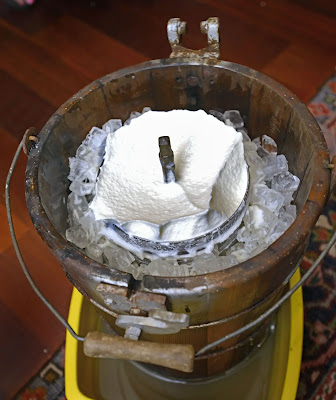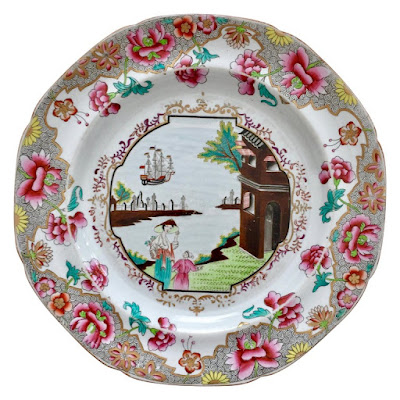ANSWER: Quilts originated as a practical need but eventually they also became personal works of art. They served as window and door coverings. Hanging quilts on the dirt walls of a sod house made them seem more homelike. Quilts could serve as privacy walls, creating sleeping areas in a sod house or one room cabin. Quilts folded and laid on a board placed between two chairs became a sofa.
 Patterned quilts have been around for a long time. While some appeared in Colonial times, the peak time for pattern quilts was the second half of the 19th century. Most quilts took hundreds of hours of work. Although some individuals did make the older ones, the most intricate ones were the result of a group of women sewing together in what became known as a “quilting bee.”
Patterned quilts have been around for a long time. While some appeared in Colonial times, the peak time for pattern quilts was the second half of the 19th century. Most quilts took hundreds of hours of work. Although some individuals did make the older ones, the most intricate ones were the result of a group of women sewing together in what became known as a “quilting bee.”
 During the years between the American Revolution and the beginning of the westward migration, bedcovers blossomed with cotton cutouts salvaged from leftover bits of expensive European chintz. Women carefully snipped around the bird and floral motifs of the imported chintzes and appliquéd them on fields of plain domestic cloth to make the most of the patterned fabric available to them. Known as patchwork quilts, these served a practical purpose—to keep people warm in bed at night.
During the years between the American Revolution and the beginning of the westward migration, bedcovers blossomed with cotton cutouts salvaged from leftover bits of expensive European chintz. Women carefully snipped around the bird and floral motifs of the imported chintzes and appliquéd them on fields of plain domestic cloth to make the most of the patterned fabric available to them. Known as patchwork quilts, these served a practical purpose—to keep people warm in bed at night.
The pioneers spent up to a year preparing for their trip West. Besides drying and preserving foods and purchasing coffee and beans and barrels of sugar and flour, they packed dishes, clothing, utensils, needles and thread. And they made quilts. The emigration guides suggested that each family should bring enough bedding so that each man, woman and child would have two to three blankets or quilts. They packed some of their quilts in trunks and kept others for daily use.
 But it was during the years of the westward journey, from 1840 to 1870, that women stitched the majority of patchwork quilts. As families moved west, fabric became scarce, so women creatively used what they had. While their Colonial forebearers used bits of leftover fabric, pioneer women also used pieces of old clothing and household linens. They stitched these scraps together in designated patterns with some pretty folksy names—the Hole in the Barn Door, Rocky Mountain Puzzle, Log Cabin, Galaxy of Stars, and hundreds of others that reflected the joys and sorrows of pioneer women’s lives. Only rarely did quilters use new pieces of cloth.
But it was during the years of the westward journey, from 1840 to 1870, that women stitched the majority of patchwork quilts. As families moved west, fabric became scarce, so women creatively used what they had. While their Colonial forebearers used bits of leftover fabric, pioneer women also used pieces of old clothing and household linens. They stitched these scraps together in designated patterns with some pretty folksy names—the Hole in the Barn Door, Rocky Mountain Puzzle, Log Cabin, Galaxy of Stars, and hundreds of others that reflected the joys and sorrows of pioneer women’s lives. Only rarely did quilters use new pieces of cloth.
Another type of quilt popular at the time was the crazy quilt, a seemingly wild pattern made more coherent by a series of straight seams. Because of a lack of space and quilting supplies, individual pioneer women often assembled lap-sized quilts suitable for throwing over the legs when riding in a wagon or carriage in cold weather.
 The crazy quilt is the oldest quilt pattern. Early quilters used any scrap or remnant available, regardless of its color, design, or fabric type. They fitted and stitched together pieces of worn out clothing, women's calico dresses, men's pants and shirts, household linens, and other oddly shaped fabric scraps.
The crazy quilt is the oldest quilt pattern. Early quilters used any scrap or remnant available, regardless of its color, design, or fabric type. They fitted and stitched together pieces of worn out clothing, women's calico dresses, men's pants and shirts, household linens, and other oddly shaped fabric scraps.
Crazy quilts, which Victorian women also used to decorate their parlors featured rich colors and textures and displayed fine embroidery skills. Victorian quilters filled their quilts with bits and pieces of their personal past; a piece of father's vest, a husband's tie, lace from a wedding veil, or ribbons commemorating political events. The result was a riot of color with a story behind each scrap.
 The quilts of the late 1800s illustrate the extravagance of the Victorian age. In fact, the quilts that most typify those years aren’t really quilts at all, but thin parlor throws meant to thrill the eye—not warm the body. At home on the tabletops, sofa arms, and piano backs of overstuffed parlors, these throws had neither quilting nor batting. Yet, in their own splashy way, they were as much masterworks of American stitchery as their pioneer predecessors.
The quilts of the late 1800s illustrate the extravagance of the Victorian age. In fact, the quilts that most typify those years aren’t really quilts at all, but thin parlor throws meant to thrill the eye—not warm the body. At home on the tabletops, sofa arms, and piano backs of overstuffed parlors, these throws had neither quilting nor batting. Yet, in their own splashy way, they were as much masterworks of American stitchery as their pioneer predecessors.
Pieced from the best silks, satins, and velvets—materials newly available to the growing middle class—the patchwork throws of this era are rich mosaics of color and texture, emphasizing proficiency in embroidery and the mastering of different types of stitches. Women's magazines of the day printed detailed embroidery instructions for anyone to follow.
 Quilt patterns varied widely. While the patchwork quilt was usually more of an overall design, quilters created specific patterns that have been passed down to today. Four of them—the None Patch, the Pinwheel, the Double Wedding Ring, and the Eight Point Star, and all their variations–were particularly popular.
Quilt patterns varied widely. While the patchwork quilt was usually more of an overall design, quilters created specific patterns that have been passed down to today. Four of them—the None Patch, the Pinwheel, the Double Wedding Ring, and the Eight Point Star, and all their variations–were particularly popular.
The Nine Patch is one of the simplest and quickest quilts to sew, and because it was a good way to use up every small scrap of fabric available, it was used often. On the prairie, sewing was an essential skill. Young girls learned to sew blocks before they learned to read. At an early age, often as young as 3 or 4, girls were taught to piece simple blocks such as the Nine Patch. Many were very skilled at piecing a block by age 5.
 The Pinwheel pattern first appeared in pioneer quilting during the 1840s. It developed as a representation of the water pump windmills found on farms or small towns along the trails westward. Water was not only necessary for cooking, drinking and bathing, but it was also a power source especially in timber and grain mills. Quilters considered the pinwheel quilt to not only be decorative, it also paid homage to the windmill that allowed them to survive pioneer life.
The Pinwheel pattern first appeared in pioneer quilting during the 1840s. It developed as a representation of the water pump windmills found on farms or small towns along the trails westward. Water was not only necessary for cooking, drinking and bathing, but it was also a power source especially in timber and grain mills. Quilters considered the pinwheel quilt to not only be decorative, it also paid homage to the windmill that allowed them to survive pioneer life.
During the early 20th century, women's tastes shifted from dark colors to a rainbow of pastel colors—mint greens, lemon yellows, and watermelon pinks. The Double Wedding Ring was a pattern that lent itself well to pastel fabrics. A feature of many Double Wedding Ring quilts was its scalloped edge created by the circles that made up the quilt.
 The Double Wedding Ring pattern dates back to the 15th century. It was reminiscent of the “Gimmal ring,” a popular engagement ring in which the betrothed couple each wore one ring during their engagement, and then the rings were interlocked during the wedding ceremony and worn by the wife.
The Double Wedding Ring pattern dates back to the 15th century. It was reminiscent of the “Gimmal ring,” a popular engagement ring in which the betrothed couple each wore one ring during their engagement, and then the rings were interlocked during the wedding ceremony and worn by the wife.
The quilt pattern can be found as early as the late 19th Century. It had long long been a symbol of love and romance with its interlocking rings symbolizing marriage. The quilt was traditionally made by Mothers and grandmothers made these quilts for their children and gave them as gifts on their wedding day or anniversaries.
Stars were probably the most common pattern used on quilts. Homesteaders traveling West used the stars for guidance, plus they considered stars as religious symbols of their faith in God.
 There were hundreds of star patterns. Some quilts had just one large radiating star, often called the Star of Bethlehem or Blazing Star, while in others, quilters used dozens of smaller stars. The simplest and most popular star pattern was the eight Point Star.
There were hundreds of star patterns. Some quilts had just one large radiating star, often called the Star of Bethlehem or Blazing Star, while in others, quilters used dozens of smaller stars. The simplest and most popular star pattern was the eight Point Star.
A star pattern wasn’t an easy design to cut or sew. Quilters had to be precise, as any inaccuracy in cutting or piecing became worse as the quilter added pieces. If poorly pieced, the quilt wouldn’t lie flat when finished. An intricate star pattern was one way for a quilter to show her needlework skills.
To read more articles on antiques, please visit the Antiques Articles section of my Web site. And to stay up to the minute on antiques and collectibles, please join the over 30,000 readers by following my free online magazine, #TheAntiquesAlmanac. Learn more about the "The World of Art Nouveau" in the 2022 Spring Edition, online now. And to read daily posts about unique objects from the past and their histories, like the #Antiques and More Collection on Facebook.








































